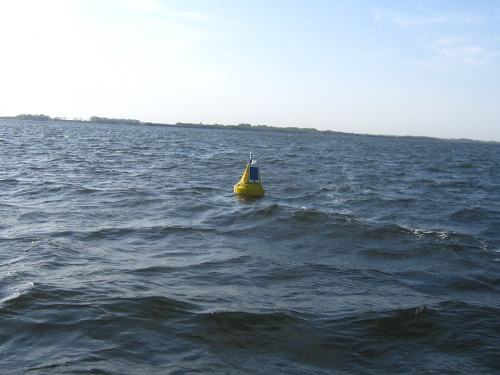Oceans, Climate, and the Hydrologic Cycle

Buoy deployed in Devil's Lake to monitor temperature, salt content, and other properties
Examples of recent projects include:
The Color of Water: What is in There?: While we often describe the color of the ocean as deep blue, the ocean actually shows many shades of blue or even a different color sometimes. The change of color, subtle or dramatic, reflects changes in the constituents that are present in the ocean. For example, blooms of phytoplankton in the ocean would shift the color to green just as tree leaves do to the landscape. Therefore, by observing the color of the ocean and its changes, we can infer what is in the ocean and how it changes over time. The color of the ocean can be observed from space (i.e. remote sensing or in the field, either above or in water). The observations are often made at different wavelengths and/or at different angles. This research is focused on inferring water constituents and their characteristics from different observational data.
Regional Climate Change and its Impact on the Hydrological Cycle: The changes in climate have affected the water cycle in the region. We use both observational and modeling approaches to quantify these changes. The specific research areas include changes in precipitation, extreme precipitation, drought, evapotranspiration, and soil moisture. Among the data that we collect from remote sensing and field observations, scintillometry data allow us to quantify evapotranspiration that has been difficulty to measure in the field over a scale of 1km. The watershed-level hydrological modeling and regional statistical approach are used to synthesize the observational data for prognostic and predictive studies.